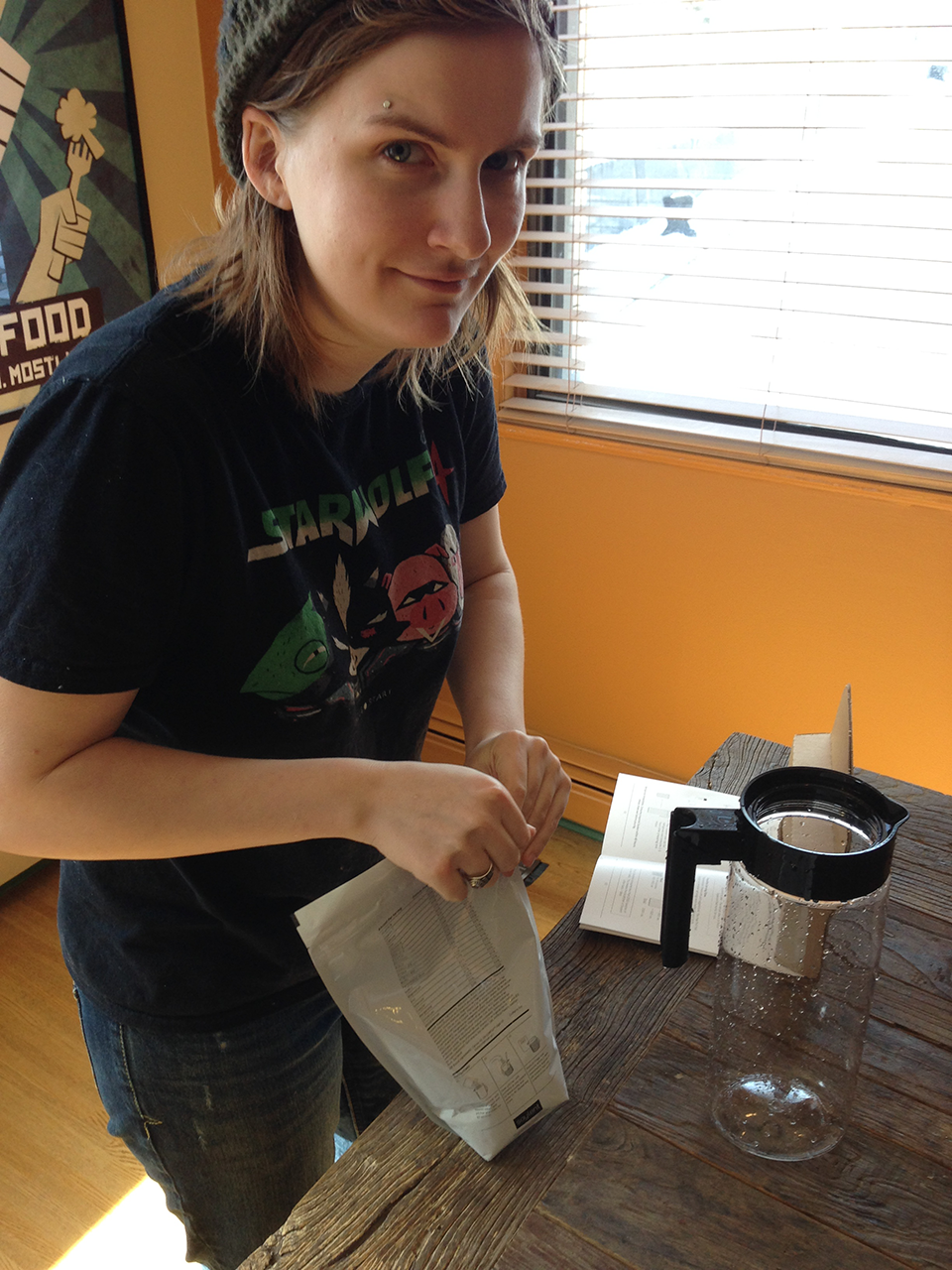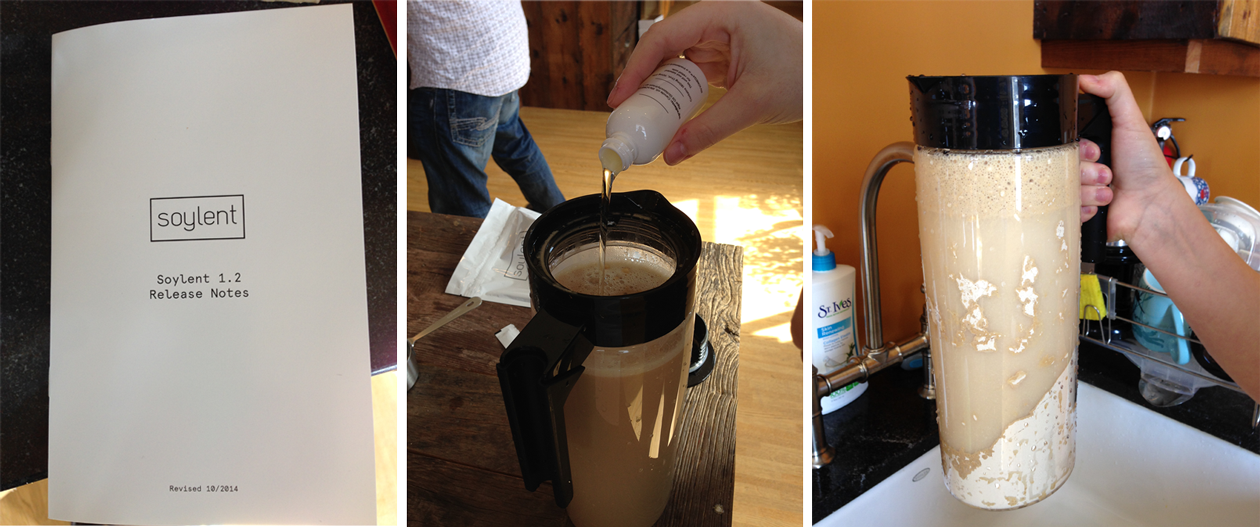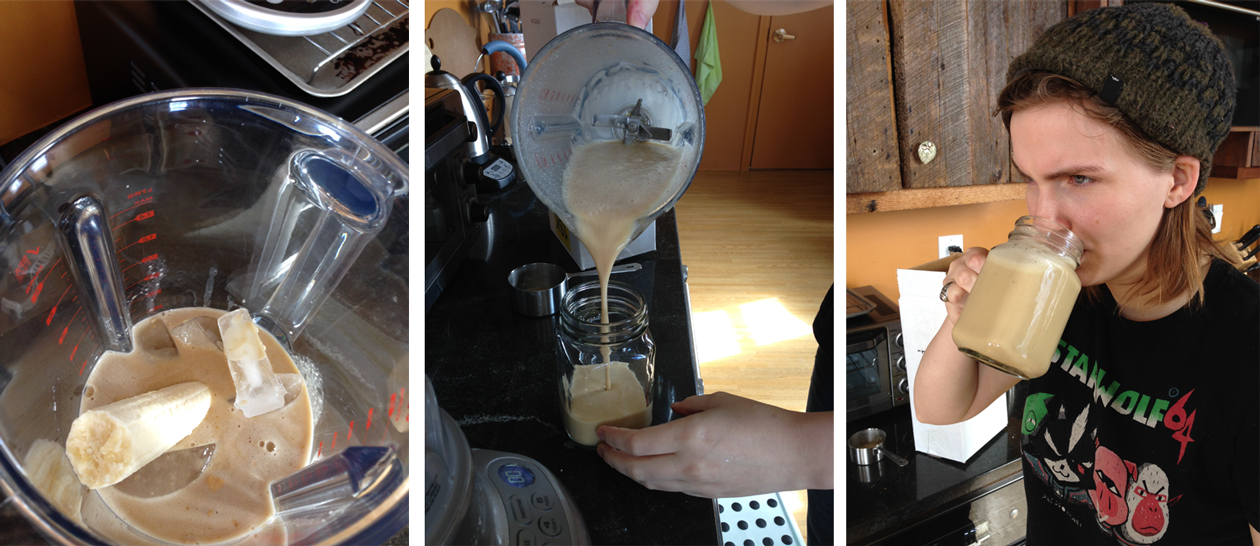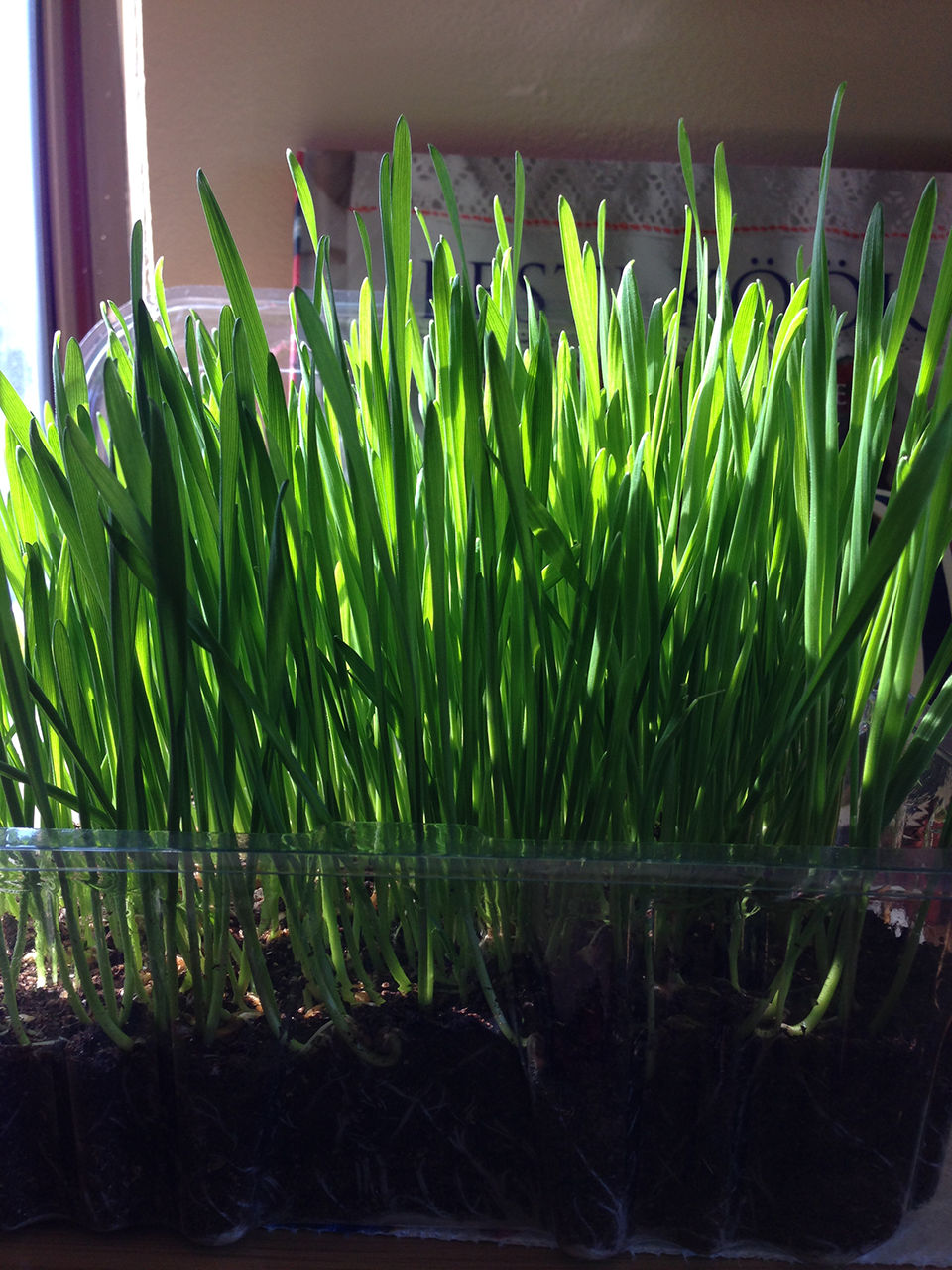We are still basking in the glow of last week’s adorable and tasty juicing experience. Somewhat ironically, that same day, designer Sarah Kaiser decided to sample Soylent™. Though it is a liquid and loaded with nutrients, we learned just how wide the spectrum spans between one healthy slurp and another.
Promising you will never have to worry about food again, software engineer Robert Rhinehart developed Soylent to address “the disproportionate amount of time and money ... spent creating nutritionally complete meals.” The product is already in its fourth release (somewhat oddly, each new formula is versioned like a software release: 1.0, 1.2, and so on). The website offers a lively forum called “Discourse” where customers can share flavoring tips, ask questions, complain about shipping methods, and find out if they are unique in having vivid dreams or headaches after consuming the product. There is even a section with recipes from the growing DIY Soylent community.
Designers Eric Benoit and Jen Patel were our early adopters. Eric states, “I’ll use Soylent to replace a meal 3–4 times a week. It’s relatively simple to make and I’ll allow myself to believe it’s a healthy meal. To punch up the taste and smooth out the chalkiness, I’ll add some peanut butter or a banana. It’s funny to see version numbers on food. I purchased v1.0 off Kickstarter and have recently got the latest batch, v1.3. I didn’t notice a difference between v1.0 and v1.3 but there was also quite a few months between trying both.” And Jen shared “I started Soylent partly as an experiment and partly as a solution to bad eating habits when I’m too busy or lazy to prepare something decent. The experimental half of it was to provide a reset for my body, to provide it with the essential vitamins and minerals the human body needs without the effort of micromanaging and balancing my diet or grinding and juicing massive amounts of veggies and fruit. It looks and tastes like a thin, gritty vanilla-ish pancake batter, which sounds terrible and can be strange to get used to at first, but it really isn’t bad, and I actually kind of like it now.”
Sarah began her journey with these reports in mind and plenty of encouragement from the Invo’ites around that day.

Only a little trepidation.

A few easy steps, and plenty of stirring.

Banana, as per Eric’s suggestion, blending, then a carefully considered first sip. Drinkable, if not especially palatable.
Now, when you consider that the Invo kitchen is a central element in our studio culture and that we regularly spend both money and time on meal preparation—we actually enjoy it—messing with a powdered food product (not a supplement, and not made from people) seems a bit incongruous.
Well, one reason might be that Soylent claims to have implications for addressing world hunger. There are some kinks to work out, such as the reality that famine exists in places where drought is so extreme that mixing anything with water is a non-option. (Or the fact that chewing plays a role in proper digestive functioning and has some impact on dental health.)
Perhaps the lure has more to do with our collective penchant for innovation. Soylent is an open-source product, so to speak; the formula is publicly available and hacking your own version is encouraged. The company began as a crowdfunded Silicon Valley startup (subsequently backed by SV venture capitalists, including Y Combinator and investment firm Andreessen Horowitz), which makes them seem like quirky relatives (and we love quirky). Even the packaging has a familiar feel, with instructions called Release Notes, formula updates listed under ChangeLog, even a vintage-y monospace font for the cover copy.
Plus, we really do want to serve the planet’s future in a positive way—reducing our carbon footprints, promoting sustainable and ecologically sound agricultural practices, and, yes, helping to solve the problem of hunger in our own town along with the rest of the world. Soylent is inexpensive compared to even frugal grocery shopping, to be sure, and it is certainly efficient to use. And we are increasing our focus on health in nearly all of our projects.
So, we sample it. Some of us will use Soylent some of the time. Some of us never will. But for the most part, Eric sums up the reason we will keep on with our inefficient, sometimes expensive, and time-intensive meal prep: Soylent “breaks the bond of sharing a meal. The time spent to make and consume is reduced to such a small amount that it takes away from the joys of cooking and eating a meal with others.”
Just in case any doubt remains, look at our first spring crop: wheatgrass. Almost ready for harvest and juicing. Healthy workplace, anyone?
